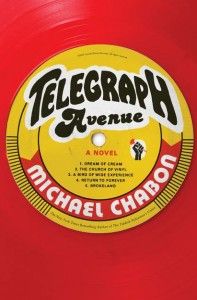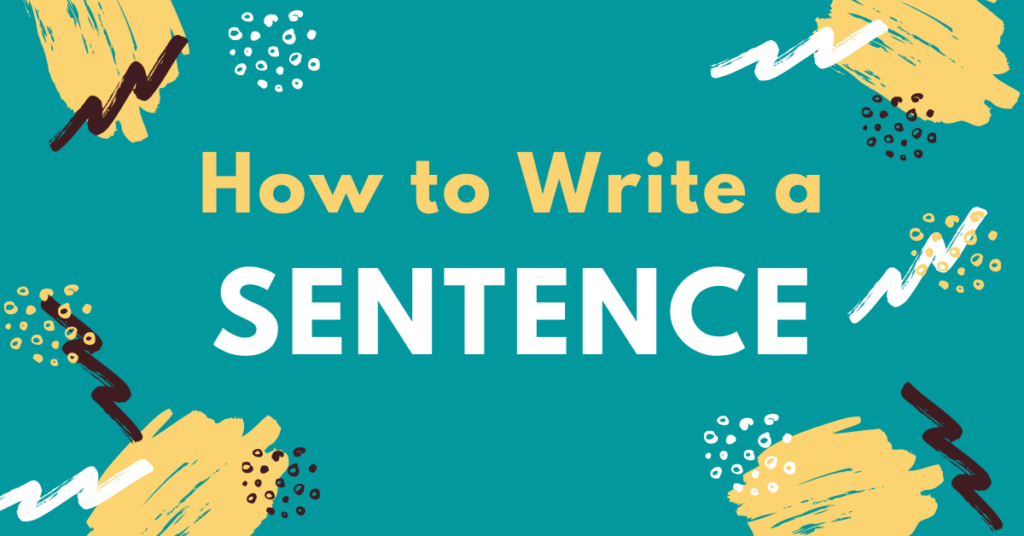 In the latest issue of GQ, Boris Kachka tries to review Michael Chabon’s Telegraph Avenue in one sentence. The justification for this is somewhat weak — he cites Jonathan Franzen for having a ‘long’ sentence in Freedom (wait: 307 words doesn’t really count as “long”) and the fact that Chabon himself tries a 12 page sentence in the book under review.
In the latest issue of GQ, Boris Kachka tries to review Michael Chabon’s Telegraph Avenue in one sentence. The justification for this is somewhat weak — he cites Jonathan Franzen for having a ‘long’ sentence in Freedom (wait: 307 words doesn’t really count as “long”) and the fact that Chabon himself tries a 12 page sentence in the book under review.
The sentence of the GQ review reveals why it’s hard to write a long sentence and provides us a wonderful example of some common mistakes. Excerpt one:
“… and he can do homages to Tarantino and Shaft, and he can write the best similes in town (a car’s old paint job looks ‘like a slice of Oscar Mayer bologna after two months in the refrigerator’), and he can spin an almost-plausible web of interconnected neighbors in the Bay Area’s post-racial, post-gay, post-modern would-be utopia …” (emphasis mine)
When writers attempt long sentences, they often end up relying on the crutch of “And,” treating it as interchangeable with periods. There’s actually a name for this technique — polysyndeton — and some authors use it admirably (McCarthy, I’m looking at you.) But good ole Cormac manages to make his string of “ands” build in rising power and pace, so the string appears to have its own narrative arc. When writers use it badly it works as a meaningless connector that makes the sentence grammatical but not beautiful.
If you want to check out some excellent examples of long sentences, look at this list of long sentences.
The other crutch for long-sentence attempters is the list. The following is a list connected only by semi-colons, which is essentially the “and” in punctuation form. Observe this list of characters in the review of Telegraph Avenue:
“Archy Stallings, who represents black, funky Oakland, a man whose great appetites include vintage-vinyl jazz and soul, which he sells through the Brokeland records in partnership with Jewish manic-depressive Nat Jaffe, who represents white, crunchy Berkeley; their wives, Gwen and Aviva (whose parallel partnership in a midwife business affords Chabon some gentle mockery of ‘hopeless Berkeletude’); Archy’s washed-up kung fu star father; ex-quarterback Gibson Goode, the nation’s fifth-richest black man, whose planned Dogpile megastore will surely be the nail in Brokeland’s coffin; two teenage hipster boys in a gay interracial relationship; and even, briefly, state senator Barack Obama … “
To write a good long sentence you have to be ingenious about the way that you couple all the boxcars of phrases together. The same, repetitive link of “and” and semi-colons won’t cut it.
Another technique that often appears sloppy in the wrong writer’s hands is anaphora, which is the use of the same word at the beginning of multiple phrases. Check out this example from Dave Eggers:
“I fly past the smaller shops, past the men drinking wine on the benches, past the old men playing dominoes, past the restaurants and the Arabs selling clothes and rugs and shoes, past the twins my age, Ahok and Awach Ugieth, two very kind and hardworking girls carrying bundles of kindling on their heads, Hello, Hello, we say, and finally I step into the darkness of my father’s stores, completely out of breath.”
I think he pulls this sentence off because the technique of anaphora is perfectly matched to the action of the sentence — a cumulative sequence of events that makes the reader feel the action of running. But the danger is having too many sentences like this … or if this is your only way of creating a longer sentence. Once again, anaphora is creating a pile-up of details — a list — in the same way that “and” and semi-colons do.
Another danger is the long sentence composed nearly entirely of parentheticals. I feel like this is the same fault of writers who create stories where the present-moment narrative thread is not nearly as interesting as the backstory. If that’s the case, why not just give us the backstory? And if that’s the case in a sentence, why not just give us the asides? Of course, in a master’s hands like David Foster Wallace, he manages to pull off what could be a wreck of a sentence and give it flair:
“Chang’s mother is here–one of the most infamous of the dreaded Tennis Parents of the men’s and women’s tours, a woman who’s reliably rumored to have reached down her child’s shorts in public to check his underwear–and her attendance (she’s seated hierophantically in the player-guest boxes courtside) may have something to do with the staggering woe of Chang’s mien and play.”
Take away the parentheticals and you’re left with this:
“Chang’s mother is here, and her attendance may have something to do with the staggering woe of Chang’s mien and play.”
That’s just not as interesting, is it. All the characterization which gives the information zing occurs in the parentheticals. So even though 42 words of a 63 word long sentence (two thirds!) are parentheticals, the sentence still works.
Links:
- Check out this list of 65 Long Sentences in Literature (long sentence defined as 100+ words).



5 comments
Here is one of GGM’s. Real damn long: https://jessbarga.escuelacampoalegre.wikispaces.net/file/view/GGM,+The+Last+Voyage+of+the+Ghost+Ship.pdf
Thanks, Carlos. That’s an excellent example, and one which uses so many techniques that it appears like a natural sentence that just rolls on and on, rather than being placed onto some medieval syntax rack and stretched.
Also, here’s the text to Donald Barthelme’s “Sentence,” a short story about sentences.
https://www.jessamyn.com/barth/sentence.html
I love all the permutations and twists of this sentence by Roberto Bolano in 2666:
“That same day Kessler was at Cerro Estrella and he walked around Colonia Estrella and Colonia Hidalgo and explored the area along the Pueblo Azul highway and saw the ranches empty like shoe boxes, solid structures, graceless, functionless, that stood at the bends of the roads that ran into the Pueblo Azul highway, and then he wanted to see the neighborhoods along the border, Colonia Mexico, next to El Adobe, at which point you were back in the United States, the bars and restaurants and hotels of Colonia Mexico and its main street, where there was a permanent thunder of trucks and cars on their way to the border crossing, and then he made his entourage turn south along Avenida General Sepulveda and the Cananea highway, where they took a detour into Colonia La Vistosa, a place the police almost never ventured, one of the inspectors told him, the one who was driving, and the other one nodded sorrowfully, as if the absence of police in Colonia La Vistosa and Colonia Kino and Colonia Remedies Mayor was a shameful stain that they, zealous young men, bore with sorrow, and why sorrow? well, because impunity pained them, they said, whose impunity? the impunity of the gangs that controlled the drug trade in these godforsaken neighborhoods, something that made Kessler think, since in principle, looking out the car window at the fragmented landscape, it was hard to imagine any of the residents buying drugs, easy to imagine them using, but hard, very hard, to imagine them buying, digging in their pockets to come up with enough change to make a purchase, something easy enough to imagine in the black and Hispanic ghettos up north, neighborhoods that looked placid in comparison to this dismal chaos, but the two inspectors nodded, their strong, young jaws, that’s right, there’s lots of coke around here and all the filth that comes with it, and then Kessler looked out again at the landscape, fragmented or in the constant process of fragmentation, like a puzzle repeatedly assembled and disassembled, and told the driver to take him to the illegal dump El Chile, the biggest illegal dump in Santa Teresa, bigger than the city dump, where waste was disposed of not only by the maquiladora trucks but also by garbage trucks contracted by the city and some private garbage trucks and pickups, subcontracted or working in areas that public services didn’t cover, and then the car was back on paved streets and they seemed to head the way they’d come, returning to Colonia La Vistosa and the highway, but then they turned down a wider street, just as desolate, where even the brush was covered with a thick layer of dust, as if an atomic bomb had dropped nearby and no one had noticed, except the victims, thought Kessler, but they didn’t count because they’d lost their minds or were dead, even though they still walked and stared, their eyes and stares straight out of a Western, the stares of Indians or bad guys, of course, in other words lunatics, people living in another dimension, their gazes no longer able to touch us, we’re aware of them but they don’t touch us, they don’t adhere to our skin, they shoot straight through us, thought Kessler as he moved to roll down the window.”
“A legion of horribles, hundreds in number, half naked or clad in costumes attic or biblical or wardrobed out of a fevered dream with the skins of animals and silk finery and pieces of uniform still tracked with the blood of prior owners, coats of slain dragoons, frogged and braided cavalry jackets, one in a stovepipe hat and one with an umbrella and one in white stockings and a bloodstained weddingveil and some in headgear of cranefeathers or rawhide helmets that bore the horns of bull or buffalo and one in a pigeontailed coat worn backwards and otherwise naked and one in the armor of a spanish conquistador, the breastplate and pauldrons deeply dented with old blows of mace or saber done in another country by men whose very bones were dust and many with their braids spliced up with the hair of other beasts until they trailed upon the ground and their horses’ ears and tails worked with bits of brightly colored cloth and one whose horse’s whole head was painted crimson red and all the horsemen’s faces gaudy and grotesque with daubings like a company of mounted clowns, death hilarious, all howling in a barbarous tongue and riding down upon them like a horde from a hell more horrible yet than the brimstone land of christian reckoning, screeching and yammering and clothed in smoke like those vaporous beings in regions beyond right knowing where the eye wanders and the lip jerks and drools.”
Cormac McCarthy, Blood Meridian
Lots of “writing advice” emphasizes clarity and directness, which we often associate with brevity. It’s rare to find an article like yours that actually looks at how to make long sentences work. I like your collection of common devices–lists, polysyndeton, anaphora, parentheticals–and your examples of how they can be effective or appear as crutches, depending on how they are used. Helpful stuff.
I’m interested in the topic because I run a daily challenge called Quadrivial Quandary (https://www.quadrivialquandary.com) that welcomes (and often necessitates) long sentences. The challenge is to use four unusual “words of the day” in one illustrative sentence, and it’s rare that this can be done compactly. So, a big part of the challenge is how to pull off a long sentence, using techniques like the ones you mentioned.
Thanks for a very informative post. Any plans for a Part II on this topic? I’d like to read more!